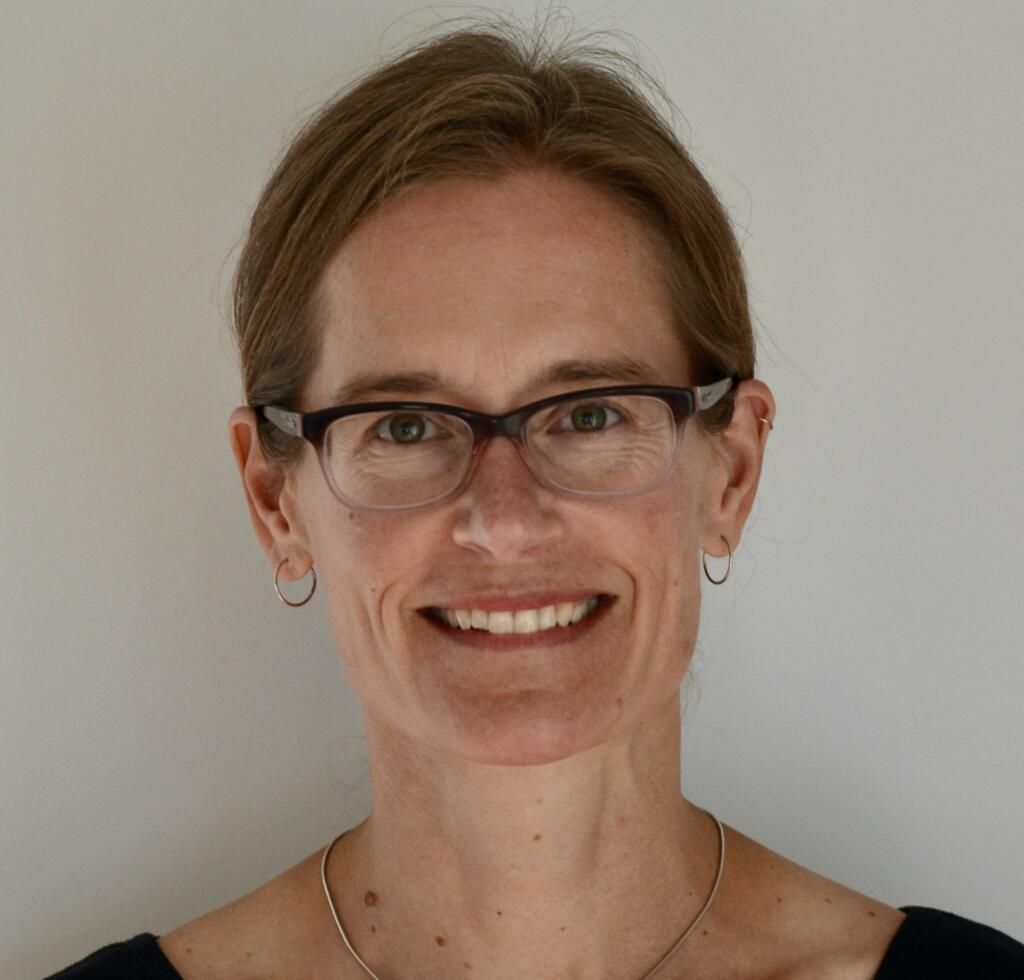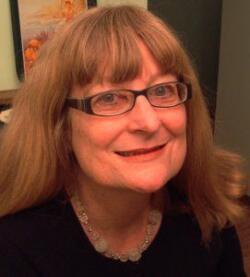For youth facing climate change
Evolution under Pressure: How we Change Nature and How Nature Changes Us
by Yolanda Ridge
Toronto: Annick Press, 2023
$17.99 / 9781773217529
Reviewed by Ginny Ratsoy
*

Nestled in the Monashee Mountains, Yolanda Ridge, with a Master’s Degree in Science and considerable experience as a genetic counsellor and science writer, has had her work cut out for her as she has branched out into writing scientific fiction and non-fiction for 10 to 14-year-olds over the last decade-and-a-half— when human-caused climate change has proliferated and young people have become increasingly aware that, as a consequence, their futures are uncertain.
The results of an international survey of 10,000 people aged 16-25, published in the Lancet in late 2021, reveal that over half of respondents were very or extremely worried about climate change, and felt negative emotions such as anger, anxiety, powerlessness, and guilt about the issue. One could speculate that such a survey today, a few short but eventful years later, would reveal even more concern among youth.

Informing her adolescent readers but not leaving them feeling helpless is a delicate balance that Ridge achieves by taking a logically organized, straightforward approach and employing a direct yet careful tone. Treating her readers with respect by crediting them with curiosity and intelligence also plays a significant role. Furthermore, Dane Thibeault’s representational illustrations deftly reflect and enhance – but never overpower – Ridge’s text.
The introduction to Evolution under Pressure poses engaging questions about the reader’s relationship to other life forms. That the book will explore humans’ purposeful alteration of the environment to better suit us and the effects of this alteration on other life forms is soon apparent. Ridge explains the concept of natural selection but also points out the role “not-so-natural selection” has played in the evolution of rhinos, pigs, and lizards – and almost everything else. In a pattern she replicates in the text’s chapters, Ridge advises readers that it is not too late to change our ways and reminds them that everything is connected.
Chapter One: ‘Natural and Not-so-Natural: How Selection Drives Evolution’ provides a history of evolution and defines key terms such as “genetic mutation,” “natural selection,” and “survival of the fittest.”Employing analogies to classroom learning and examples such as the long-necked giraffe’s suitability to areas with tall trees, she likens evolution to a tree with many branches and no end to its growth in sight. She explains not-so-natural selection as plants and animals adapting to us, with the all-too-relevant example of wildfires destroying grass, resulting in depleting deer and, likely, mountain lion population. Humans are responsible for selective breeding, pest control, and the use of animals for purposes unrelated to their survival, she emphasizes.
Chapter Two: ‘Hornless: How Hunting Hurts Rhinos’ explains that, as humans’ bigger brains and ability to walk upright made us suited to living in different environments, and we hunted, gathered, and developed tools for survival and, eventually, fun, rhinos’ horns attracted us. Ridge points out that poaching and climate change have depleted rhinos to the point that three of five species are now considered critically endangered. Humans are responsible for rhinos’ climbing down the evolution tree; hornless, they are at a disadvantage for finding food, reproducing, and fighting off other competitors, as is also the case with some elephants and big horn sheep. After outlining remedies for this disruption of the web of life, she encourages young readers to join Save the Rhino or donate to Rhino Rescue Project and offers hope in the example of the Dane Nan Yé Dā Kaska Land Guardian Program, which began in 2015 to address moose poaching, and is one of over 50 similar programs in Canada.
Chapter Three: ‘Pleasant Pork: How Farming Picks Pigs’ examines the obliviousness of Homo Sapiens to the species extinction they were causing through agricultural practices. Breeding domestic female pigs with wild males resulted in the extinction of the latter, and agrotechnology in the form of gene editing produced tailless pigs with organs suitable for human transplant. In fact, she states, gene editing controls everything – including ourselves. After suggesting improvements to farming at the macro level, Ridge invites readers to improve their own local situations, cites two American examples of organizations tailored to involving youth in food security, and reminds readers that humans and pigs share the same branch of the evolutionary tree.

Chapter Four: ‘Camouflage: How Pollution Colors Moths’ tackles the environmental cost of industrialization by examining the peppered moths, who initially were easier prey when coal burning charred trees; later, random genetic mutation resulted in black peppered moths becoming more common. Some speckled moths reappeared after some of the soot was cleared up.
Ridge then explores how climate change has affected everything from Finland’s tawny owls to the Quino checkerspot butterfly. The latter has migrated, along with their predators, further north, leaving fewer pollinators in their former habitation, and their own population has been decimated. Ridge sees lessening income equality globally and a general slower pace – tall orders, certainly – as the remedies. More practically, after outlining what the individual reader can do, she inspires with the story of a high school student in India who has invented numerous solar-powered devices.
Chapter Five: Sticky Feet: ‘How Cities Shape Lizards’ explores the impact of urbanization and rapidly increasing population on plants and animals. If you don’t change, you die, and some species of lizards and mice have adapted extremely quickly. But invasion, infestation, and toxic tolerance have also resulted, and there is a limit to how fast any creature can evolve. Ridge provides examples of cities from Milan to Toronto going greener, and looks at the wildlife bridges in Banff National Park that keep animals and asphalt from mixing, as well as protecting animals from the barrage of tourists. She encourages young readers to go green on a more personal level, too, by conserving green space, gardening, and selecting native plants.
Evolution under Pressure’s conclusion summarizes, reiterates the damage humans have caused to our shared environment – to the tune of the extinction of as many as 150 species daily – and leaves the young reader with three fundamental questions that should govern their future ethical decisions well.
The final lists of resources – from scholarly articles through to YouTube videos, Ted Talks, and podcasts, as well as website addresses of the projects discussed in the various chapters – leave the aspiring young scientist with plenty of avenues to pursue.
In keeping with Annick Press’s mandate to publish “literature for youth that reflects the world of the contemporary child” Yolanda Ridge’s Evolution under Pressure: How We Change Nature and How Nature Changes Us also promotes the critical thinking requisite in the upcoming generation of citizens and is complemented by a fairly thorough educator’s guide on the press’s website.
*

Ginny Ratsoy is Professor Emerita at Thompson Rivers University, where she created and taught many courses, including one on the environment in Canadian literature. Her scholarly publications (co-authored and edited and co-edited books and numerous peer-reviewed articles) have focused on Canadian fiction, theatre, small cities, third-age learning, and the scholarship of teaching and learning. In addition to counteracting ageism by maintaining a growth mindset through activism, freelance writing and community engagement, she promotes third-age learning through her involvement as a board member, coordinator, and instructor for the Kamloops Adult Learners Society. [Editor’s note: Ginny Ratsoy has recently reviewed books by Winona Kent, Amanda Lewis, Gregor Craigie, Iona Whishaw, Elizabeth Bass, Karen L. Abrahamson, & J.E. Barnard (eds.), and Gregor Craigie & Kathleen Fu]
*
The British Columbia Review
Interim Editors, 2023-24: Trevor Marc Hughes (non-fiction), Brett Josef Grubisic (fiction)
Publisher: Richard Mackie
Formerly The Ormsby Review, The British Columbia Review is an on-line book review and journal service for BC writers and readers. The Advisory Board now consists of Jean Barman, Wade Davis, Robin Fisher, Barry Gough, Hugh Johnston, Kathy Mezei, Patricia Roy, Maria Tippett, and Graeme Wynn. Provincial Government Patron (since September 2018): Creative BC. Honorary Patron: Yosef Wosk. Scholarly Patron: SFU Graduate Liberal Studies. The British Columbia Review was founded in 2016 by Richard Mackie and Alan Twigg.
“Only connect.” – E.M. Forster
5 comments on “For youth facing climate change”
Great review Ginny. I passed it onto friends with grandchildren, who are always looking for books for them.